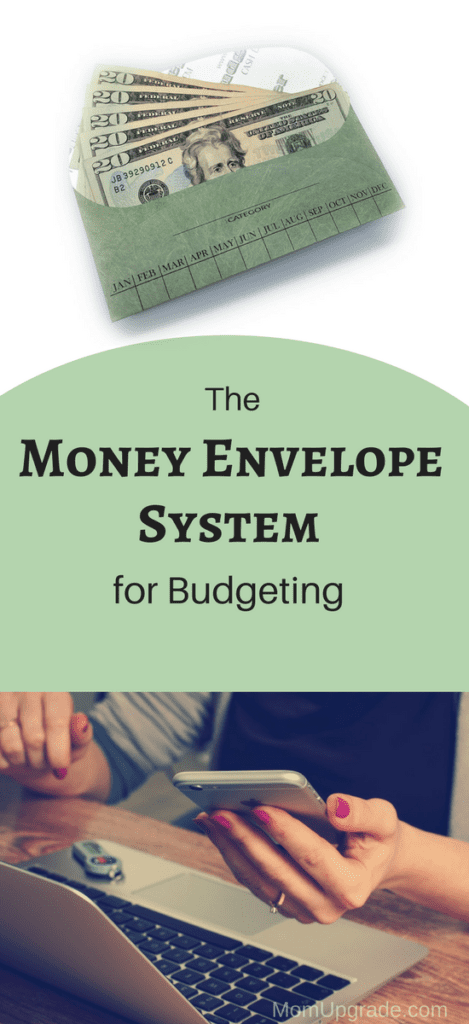
“The electric company just sent the notice. We have three days to pay up or they shut off the electricity.” They were words that I hated to hear . . . but they were becoming all too often. We were behind in everything. Electric. Internet. Phone. The bills piled up and I was stressed out. Without electricity, I couldn’t make money. Same with the Internet. What were we going to do? Here’s how the money envelope system for budgeting helped us get back on our feet.
I sat down to look at the money we had and would have within the next three days. My chest felt tight and my head throbbed. My two toddlers alternated climbing on me and hitting each other until I felt like smacking them myself. There just wasn’t enough money. But I knew we’d had it earlier in the month . . . what had we spent it on? I racked my brain for some ideas. Then I turned to my husband for ideas. He thought long and hard before holding up a finger, “I know. Remember the tire we had to replace? That was more than we expected. And then we had to buy a gift for my niece’s confirmation.” And poof, money gone.
Have you ever felt this way? Like you just can’t keep a grip on that slippery thing we call cash? You’re definitely not alone. It sucks. Fortunately for us, I discovered the money envelope system for budgeting and it changed our lives.
In our family, I’m a freelance writer and my husband is a musician. Neither of us have steady work, so when there’s money, it often ends up being siphoned into things we never meant to pay, but have been putting off. It’s easy to mismanage money, particularly when it’s not coming in on a regular basis. Then I stumbled across the money envelope system.
What is the Money Envelope System for Budgeting?
 Basically, this system requires you to divide your money into envelopes or categories. We used actual envelopes because it just seemed easier, but some people use an app to track their money in a bank account.
Basically, this system requires you to divide your money into envelopes or categories. We used actual envelopes because it just seemed easier, but some people use an app to track their money in a bank account.
You have to track your spending for at least a month in order for the budget to work. Write down everything that you spend, even if it’s just fifty cents on gum. Trust me, it will open your eyes to all that you do spend on! Chances are you can cut back quite a bit . . . at least, that’s what we figured out!
As money comes in, you put it into the envelopes. You’ll have fixed costs and variable costs and we like to estimate a little higher than average for the variable ones. For example, electricity is a variable cost in most homes. If you pay an average of $175 a month, you might want to put aside $200 for the first few months, in case it spikes.
A fixed cost would be internet or water fees. These amounts can be very specific in the envelopes. You can’t really change them, either.
Once you’ve tracked everything for a month, you’ll no doubt see a few areas you can cut back. Food, for example, is often a big chunk of the budget, but it’s also the most flexible. You can drastically reduce some of your costs with a few simple tweaks. For example, buying store brand instead of name brand items when it doesn’t really matter, or cutting back on the amount of meat and cheese you eat.
How the Money Envelope System for Budgeting Works for Us
At first, it was really, really awkward to carry around those envelopes. Yes, we could have taken the money out and kept track, but I didn’t trust either of us to do that. So we took the envelopes when we went to run errands. (I later found these vinyl envelopes that make life so much simpler!)
Even my husband got used to the idea. He would ask for the gas envelope when he went out and knew he needed gas. He would even ask me how much we had in the fun envelope before making a suggestion that involved spending money on going out.
It took us a couple of months to really get settled into the routine. But it was comforting to have a limit. We went to the grocery store and we knew that we had a specific list we could buy, nothing more. When we found something on sale or could use a coupon, it was like Christmas! I carefully put the extra money back into the envelope and we would either splurge on something for the family or we’d use it for the next month.
Once the money envelope system for budgeting was established, we found it simpler to stick to the budget. We ate healthier because everything was planned ahead. We didn’t leave the house as often, because we had everything we needed for the month at home. This meant less gas and more savings.
But the biggest benefit was paying the bills on time. We were thrilled to never have late fees and to stay up to date on our bills. It was the best thing to come out of all of this! It also allowed us to start saving up, so when fun things pop up, we can take part, instead of feeling lousy about missing out on yet another thing that our kids would love.
The envelope system is not for everyone. In fact, it can be really bad if you have 0 willpower, because you’ll end up “borrowing” from other envelopes to make up for your mistakes. That’s definitely not the way to go, but it can be very tempting. For those able to make it work, however, this system is a lifesaver.
Here are a few resources that I find handy. I really love using colorful envelopes for my budget . . . it makes it a little more exciting.
Leave a Reply